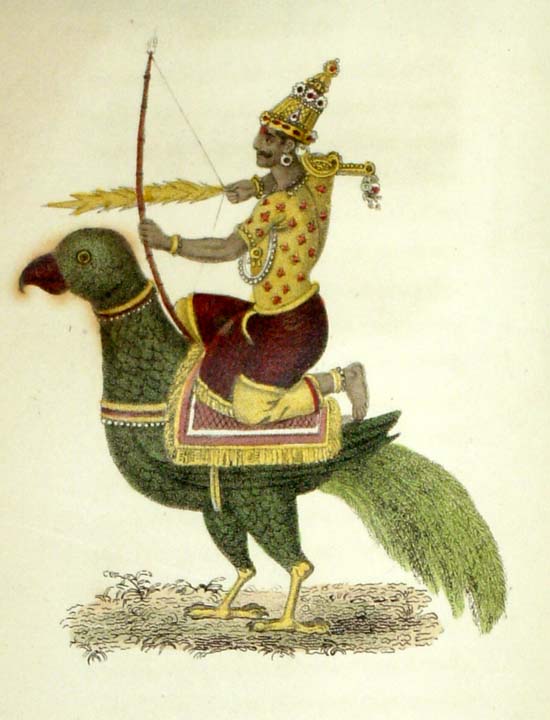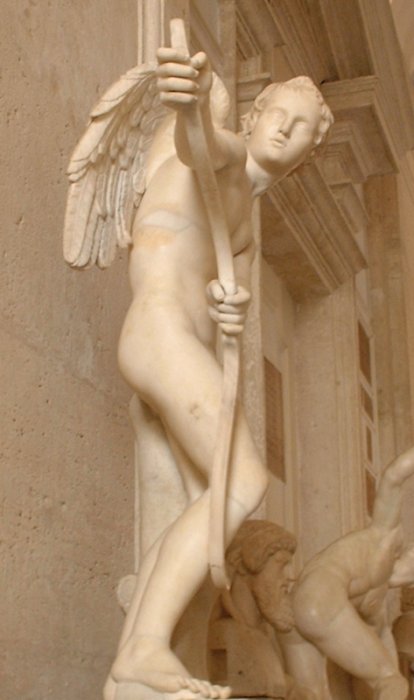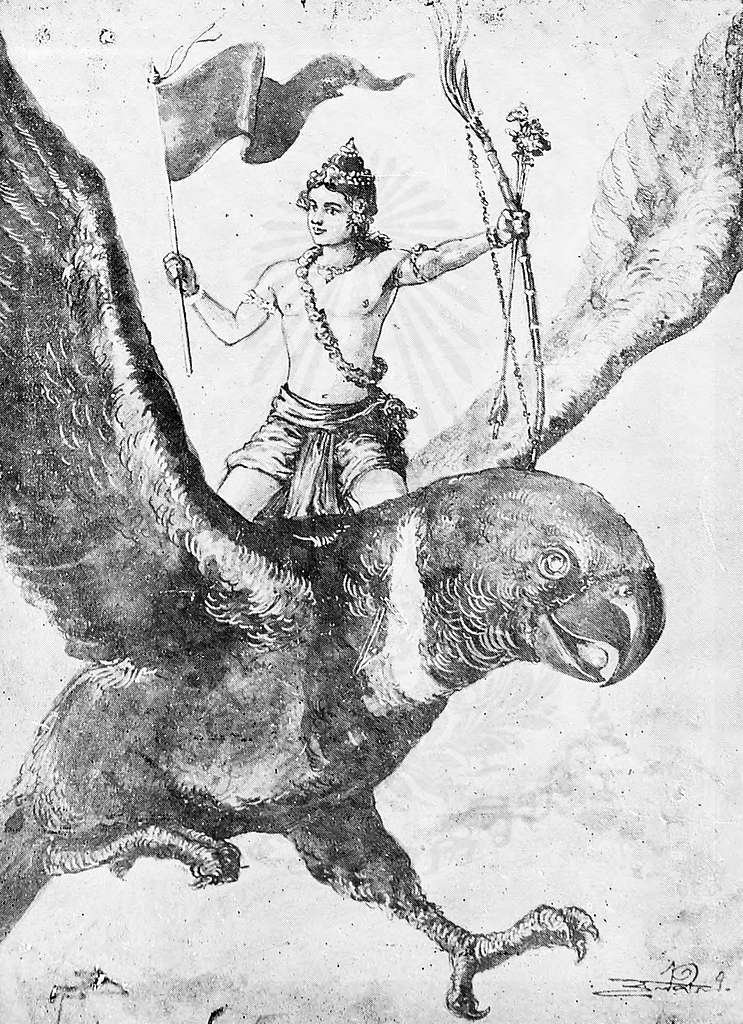The Greek god Eros and the Hindu god Kama share many traits as their respective traditions’ gods of desire. From their similarly primordial origins to their common weapons, these two gods also critically shaped their pantheons with their powers.
Origins
While many identify Eros as the son of Aphrodite and Ares, both Hesiod’s Theogony and Parmenides indicate that Eros was one of the earliest gods. As a primordial god of romantic passion, Eros was essential to creation, along with Gaia and Chaos.
The ancient Hindu Rigveda identifies that Kama, or Desire, was the first creation of the One Thing out of Darkness. Here is Hymn 129, titled Creation, from the 1896 translation by Ralph T.H. Griffith.
2 …
That One Thing, breathless, breathed by its own nature: apart from it was nothing whatsoever.
3 Darkness there was: at first concealed in darkness this All was indiscriminated chaos.
All that existed then was void and form less: by the great power of Warmth was born that Unit.
4 Thereafter rose Desire in the beginning, Desire, the primal seed and germ of Spirit. …

Both Greek and Hindu traditions value Desire as a critical creative force for the universe.
Weapons
The similarities between the gods hardly end there. How can we mark Valentine’s Day without adorable Cupids armed with bows and arrows? The weapons of Eros and Kama vary across time periods, but they both wield a bow and arrow.
Eros’s affiliation with bows only appeared in the 4th century BCE, perhaps largely thanks to Euripedes’s plays.

It’s said that Eros’s sharp-tipped arrows, golden with dove feathers, spark love, while his leaden arrows fletched with owl feathers cause indifference.
Even the materials of these arrows carry meaningful associations. Beautiful and passionate Aphrodite is associated with doves, while the celibate and strategic Athena is associated with the owl, who characterizes wisdom. Additionally, Hephaestus is the Greek god of metal and blacksmithing, famously married to and at odds with Aphrodite. Less familiar is Chrysos, the Greek spirit of Gold.
Eros’s dull arrows may suggest that Athena and Hephaestus encourage indifference in the face of the stark realities of war and engineering. Eros even fell prey to his own weapons.
Kama, too, carries a bow as his weapon of choice. His bow is formed from sugarcane and the bowstring a line of humming bees. His five arrows are as follows:
1. The sun lotus, causing infatuation
2. The Ashoka flower, causing excitement
3. The mango flower, causing parching or withering
4. The jasmine flower, causing heating
5. The blue lotus, causing paralysis or stiffening
Impacts
Given the ancient origins of the gods of desire, they unsurprisingly have huge impacts on their respective pantheons.
Some scholars suggest that Eros was responsible for Uranus’s attraction to Gaia, thus leading to the creation of the Titans. He also struck Hades with one of his golden arrows, upon which the god of the Underworld was struck with unrelenting desire for the first person he saw, Persephone. Eros’s love arrows are also responsible for Zeus’s many—ahem—interactions with humans. Unfortunately, Eros himself fell victim to one of his dull arrows when his love, Psyche, accidentally scratched him.
In Hindu tradition, Kama plays a vital role in the relationships of two of the gods of the Hindu trinity.

Brahma falls in love with Saraswati thanks to one of Kama’s arrows. This myth echoes Pygmalion and Galatea in that the goddess Saraswati is one of Brahma’s creations.
The second love story involves Shiva and Parvati, whose son Kartikeya was destined to defeat a demon who was terrorizing the other gods.
Tiny problem: Shiva, meditating on Mount Kailash, expressed no interest in taking a wife after the death of his love, Shakti. The other gods begged Kama for his help, and he shoots Shiva with his arrow to force the god to take an amorous interest in Parvati. Although she spent ages meditating, praying, and performing penance in hopes of winning Shiva’s favor as his bride, he refused to even notice her until Kama’s arrows pierces him. However, Shiva is so infuriated by Kama’s interference that he burns Kama into formlessness by opening his third eye. In the end, Shiva grants Parvati her boon, takes her as his wife, and eventually she conceives their son who rescues the gods from the demon.
I’m constantly surprised by the parallels between Ancient Greek philosophy and mythology and Hindu ones, such as their beliefs about love. Eros and Kama, gods of desire, provide additional alignment between these belief systems.
References
www.ancientpages.com/2023/04/19/greek-god-eros
https://advaya.life/articles/the-world-began-with-chaos-eros-and-gaia
https://sacred-texts.com/hin/rigveda/rv10129.htm
A Classical Dictionary of Hindu Mythology and Religion by John Dowson
Hindu Myths: A Sourcebook Translated from the Sanskrit by Wendy Doniger O’Flaherty
